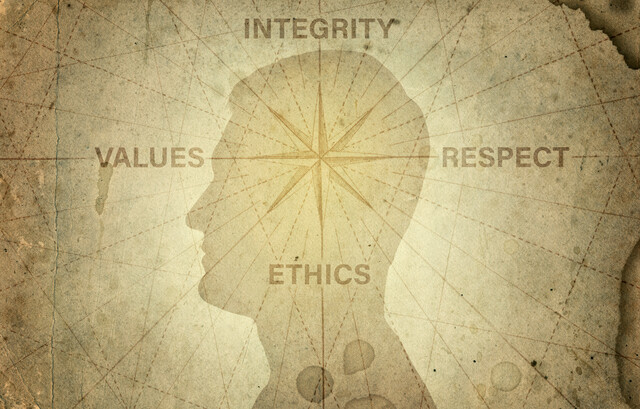Total quality management takes care of the customer. The operations manager's objective is to build a quality system that identifies those stated or implied needs, and then strives to satisfy them.
Quality and Strategy
Quality, or the lack of quality, affects the entire organization. It impacts supplies, customers, product design, maintenance, and every other facet related to the firm. It is a very demanding task to build an organization that can achieve a high level of quality. Yet it must be done for the company to succeed.
When identifying strategies to pursue, building in quality from inception is a necessity. Improvement in quality increases sales, builds reputation, reduces costs, and increases profitability. Starting without quality puts the firm significantly behind and puts success at risk.
Cost of Quality
Many experts believe that the cost of poor quality is consistently underestimated. Failing to work hard to achieve quality is to accept the cost that comes with fixing what went wrong. The media provides examples every day of this in the form of product recalls. Global car manufacturers recalling millions of vehicles for faulty ignition switches and makers of baby products recalling tens of thousands cribs and car seats. The cost of the repair is measurable, but what would it have cost to ensure those parts met specifications before installation?
Ethics in Quality Management
There are many stakeholders in the manufacturing of a product � stockholders, employees, customers, suppliers, creditors, and distributors. An organization must develop core values that are day-to-day guidelines, applicable to everyone from the CEO, to the production line. As a matter of ethics, management must follow those guidelines and, in all things quality, ask if a stakeholder is being wronged.
One of the most important jobs of the operations manager is to deliver safe, healthy, and quality products or services to customers. All decisions in the development of a product should focus on quality first, to avoid poor quality. If there is a question of quality, ethics dictate that the firm takes responsible action to rectify the situation.
International Quality Standards
All around the world, companies recognize the importance of quality. As products are imported and exported from country to country, a quality standard was necessary to protect citizens all over the globe.
In 1991, 91 member nations published ISO 9000, a series of standards to establish quality management procedures. These include leadership, documentation, work instructions, and record keeping. The United States has adopted these standards through the American National Standards Institute, or ANSI, as the ANSI/ASQ Q9000 series.
ISO 14000 is an environmental standard with five core elements:
1. Environmental management
2. Auditing
3. Performance evaluation
4. Labeling
5. Life cycle assessment
This standard is also being accepted worldwide. It has an emphasis on pollution prevention, reduces the need for multiple audits, promotes a positive public image, reduces exposure to liability and advocates compliance with regulatory requirements and opportunities for competitive advantage.
Six Sigma
Six Sigma is a total quality management program that saves time, improves quality, and lowers cost. Implementation is a big commitment but yields big results. Motorola began the program in the 1980s because of customer complaints. They reduced defects by 90% through benchmarking, changing critical processes, listening to employees and adding training. GE applied it to services with equal success.
Six Sigma is both a strategy and a discipline. It focuses on total customer satisfaction but also follows a strict formula known as DMAIC. This is a process improvement model aimed saving time and reducing cost.
D = Define
M = Measure
A = Analyze
I = Improve
C = Control
Just in Time (JIT)
Just in time quality systems are designed to deliver product and supplies just when they are needed, reducing or eliminating storage and inventory time at the sending or destination points. While this may sound more like a supply chain management function, it applies to quality in three important ways.
1. JIT cuts the cost of quality. Much of inventory costs are related to damage, scrap, rework, or inventory investment. Inventory can hide bad quality, where JIT immediately exposes it, providing the opportunity for continuous improvement.
2. JIT improves quality. This is because it shrinks lead time. It reduces the chance of error and limits the possible sources of those errors. It acts, in essence, as an early warning system.
3. JIT is easy to employ and means less inventory. Inventory is often kept on hand to protect against poor production. But if quality is consistent, it eliminates the need to do so.
Role of Inspection
Inspection provides the opportunity to control the total quality management system. The best processes have very little variation from the standard to which the product is held. Inspection ensures consistent quality and it is up to the operations manager to build a system that enables consistency.
The goal of inspection is to detect deficiencies or a bad process immediately, so that corrective action can be implemented. Inspection can involve:
-
Measurement
-
Tasting
-
Touching
-
Weighing
-
Testing
There are two issues relating to inspection: where to inspect and when to inspect. Inspection should be considered an audit. While an audit has no value added to a product, the information obtained is critical to success.
Audits (inspections) can occur anywhere, frequently at the following sites:
1. At the supplier's plant
2. At your facility when goods are received
3. Before process commencement
4. During the step by step process
5. When production or service provision is complete
6. Before the product is delivered to the customer
7. At the point of customer contact
While inspections do not take the place of a robust total quality management system, they are a useful tool.
Quality in Services
Given that services are intangible, quality measurement is more difficult to obtain. It basically comes down to meeting customer expectations, that is, what the customer thought the experience would be like before-service and their actual-service experience. However, there are tangible elements to service delivery that can be treated as such.
Planning the capacity of a facility and then managing it to stay current and productive is one of the many tasks of the operations manager. Once a production process has been established, the next item to be determined is capacity. Capacity is defined as "throughput," or how many units a facility can produce, hold, receive, and store in a specified period of time.
Capacity
Capacity is what determines if demand will be satisfied, or if the facility will sit idle from lack of use. If it is too large, idle portions will add to the cost of production, while if it is too small, customers -- and even entire markets -- will be lost, because demand cannot be met. The key is to plan and manage a facility that is capable of high utilization and a high return on investment.
Capacity planning can be viewed from the three time horizons discussed in forecasting.
1. Long range forecasting . A time period of greater than one year, this is a function of adding facilities and new equipment that requires a long lead time.
2. Medium range forecasting. A time period of three to eighteen months, this allows more options and greater flexibility. Management can subcontract, add equipment, personnel, shifts, or build up or use inventory.
3. Short range forecasting is not applicable to capacity. In three months or less, little can be done to change what capacity exists.
Design and Effective Capacity
Design capacity is the maximum theoretical output, under ideal conditions, in a set amount of time. However, most operations do not run at design capacity and, instead, run at a capacity that makes them the most efficient.
Effective capacity is what the firm expects to produce, given current operating constraints. This happens because the facility may have been designed for another use, product, or product mix than is currently in production.
Utilization is the percentage of design capacity that production meets. Operations managers tend to be evaluated on efficiency however. It is difficult to get 100 percent efficiency in effective capacity. This is where a focus on correcting quality problems and conducting effective scheduling, training, and maintenance help an operations manager achieve the efficiency rating required.
Keep in mind that facility design, planning, and capacity must be part of strategy. Investments should be in line with long-term strategic goals. Operations managers need to ask themselves if investments of this type will win customers or provide a competitive advantage.
Other factors to consider when making facility design, planning, and capacity decisions are:
1. Ensuring demand is forecast accurately. What is the product life cycle? What volume is expected over that cycle?
2. Understanding the increments. Technology is always improving and what is put to use in the new facility will also generate impacts on quality, staffing, cost, and reliability.
3. Finding the optimum operating level. This is, at what level is the facility viable, and if it can be sustained.
4. Building for change. Whatever the intended use of the facility is, factor in the possibility of change and what that might be. Flexibility in the early design ensures multi-use functionality in the long run.
Relationship Between Facilities and Users
Another consideration in facility planning and management is how users will utilize the building. It is not always about the tangible aspects of production and product. Personnel will utilize the building. There are myriad government regulations, laws, guidelines, and requirements that will need to be met in the construction of a facility. But in addition to that, consider the work atmosphere. Ensure the people that will work in the facility will find it not only safe and healthy, but welcoming and pleasing to work within. A positive work atmosphere increases productivity.
Facility Planners
Facility planners are individuals who specialize in meeting, not only all the government requirements, but also implementing the preferences of the organization. They specialize in making the most out of the space available. They exist in all industries, from manufacturing layouts to restaurant table placement.
Workplace Strategists
Workplace strategists focus on how to use space more effectively and efficiently. Workplace strategy can help organizations achieve objectives, such as reduction of costs, improving performance, relocating, consolidating, or merging. Instead of a new facility, redesigning a current facility may be a more affordable option. While it requires internal input from stakeholders, the external perspective may yield unexpected solutions.
























